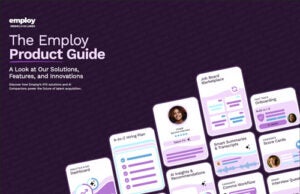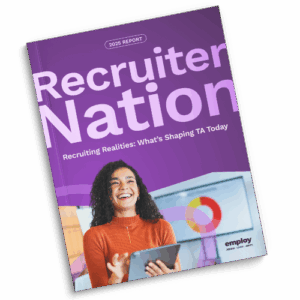Updated: June 23, 2025
You know your top candidates.
Their resumes, career histories, interview stages—it’s all tracked in your HR recruitment software. You’ve followed their journey in your applicant tracking system, logged notes, scheduled interviews, and tracked every engagement with the help of your favorite recruiting tools.
But that’s just your view of the process. What’s often missing? The candidate’s perspective.
Did they find your application easy to complete? Were they kept informed along the way? Or did slow communication, confusing job descriptions, and inconsistent experiences leave them frustrated?
Understanding and improving the candidate experience (CX) is no longer optional. It’s a vital part of any modern talent acquisition strategy—one that impacts how candidates perceive your brand, and whether they ultimately accept an offer (or ghost you completely).
Candidate Experience: The Overlooked KPI
Every interaction with your hiring team leaves an impression—positive or negative. Whether you track CX or not, every applicant walks away with an opinion about your process.
Unfortunately, traditional TA metrics like time-to-fill or offer acceptance rate don’t capture how candidates feel about your brand.
And in a world where recruiting is more personal than ever, that human sentiment matters. A poor experience can damage your reputation, increase employee turnover, and shrink your talent pool over time.
On the flip side, a great candidate experience can boost engagement, improve employee retention, and turn even rejected candidates into brand advocates.
A Better Way to Measure Candidate Experience (That’s Actually Scalable)
So how do you know if your candidate experience is working?
You need the right tech foundation. With Lever, you can integrate candidate relationship management into your everyday workflows, and collect real-time feedback that tells the full story—not just the numbers.
With Lever, you can:
- Collect feedback post-interview to refine your hiring process. Understand how candidates felt about communication, interview structure, and clarity. Their input can uncover hidden pain points and opportunities to improve.
- Tailor surveys by team, region, or role. Customizing questions ensures feedback reflects the specific experience each candidate had—making it far more actionable than a generic survey.
- Automate delivery to capture timely, consistent insights. Trigger surveys right after interviews or offer decisions to gather feedback while the experience is still fresh, without adding manual steps for your team.
- Monitor Candidate Net Promoter Score (CNPS) to track sentiment. CNPS helps you gauge candidate satisfaction at scale and identify trends that impact your brand perception and hiring outcomes.
The result? Rich, actionable insights you can use to improve every touchpoint in the recruiting journey—from application to offer.
How Hot Topic Rebuilt Their Candidate Experience with Lever
Retail brand Hot Topic hires over 1,500 employees every quarter. But before adopting Lever, providing a consistent and positive candidate experience at scale was a challenge.
Their previous applicant tracking system lacked automation, analytics, and a way to effectively manage candidate engagement.
“The old ATS didn’t have automation or note-keeping capabilities,” said Michelle Wentz, Director of Talent. “Every time we reached out to a candidate or wanted to share our notes with the hiring manager, we had to type an email.”
The outdated system created bottlenecks, and the application experience itself wasn’t cutting it—especially for Gen Z applicants. “They’re not going to sit there and fill out an application for 40 minutes,” Michelle added.
After switching to Lever, Hot Topic transformed both their processes and outcomes:
- Custom automation saved recruiters time and streamlined communications
- Recruiters spent more time focused on candidate relationship management, not admin tasks
- Candidate drop-off decreased by 300%, thanks to a faster, more intuitive experience
- Integrated tools, including a chatbot and HRM software, created a seamless process across locations
“We wanted something that was quick, easy, and really focused on the candidate experience,” said Michelle. “Lever met those needs across our HQ, distribution center, and store hiring teams.”
Why CX Drives Long-Term Recruiting Success
You can invest in recruitment marketing, branding, and sourcing tools—but if candidates hit a wall once they apply, you lose them.
With Lever, your team can use real-time candidate experience data to identify pain points, fine-tune communication, and design a more supportive hiring journey. That leads to stronger relationships, better hires, and long-term loyalty.
In today’s hiring landscape, the companies that win are those that treat candidates like customers—creating meaningful, respectful, and human-first experiences at every stage.
Ready to level up your candidate experience? Let Lever help. Our unified ATS and CRM platform gives your team the tools to engage top talent with intention—and deliver a hiring experience they won’t forget.
Explore Lever to see how smarter, people-first recruiting starts with the right tech.















